Warning of the risk of pneumothorax after high-intensity exercise
The case of a 25-year-old male patient with pneumothorax after overexerting himself at the gym is a typical example that needs to be warned.
Illustration photo. |
Patient NTA (25 years old, Hanoi ) had symptoms of chest pain and a feeling of heaviness in the chest after doing weightlifting exercises. The pain increased when coughing, taking a deep breath, or doing vigorous exercise, making it impossible for him to continue exercising. Worried, the patient went to Medlatec Cau Giay General Clinic for examination.
Through clinical examination and chest X-ray, the doctor discovered a pneumothorax in the right pleural cavity. The patient was transferred to Medlatec General Hospital for intensive treatment and monitoring.
The patient's medical history revealed a previous ventricular septal defect repair surgery as a child, but he had no previous respiratory symptoms. A chest CT scan confirmed a moderate to severe pneumothorax, accompanied by pulmonary consolidation in the upper lobe and S5 segment of the right lung. This was determined to be a result of exercise-induced lung injury.
MSc. Pham Duy Hung, Deputy Head of Internal Medicine Department, Medlatec General Hospital, said that high-intensity physical activities such as weightlifting can increase pressure in the chest, causing small air bubbles or cysts under the pleura that silently exist to rupture, causing spontaneous pneumothorax.
This condition causes air to escape from the lung parenchyma and accumulate abnormally in the pleural cavity, preventing the lungs from expanding normally, causing chest pain, difficulty breathing, rapid heart rate, and if not treated promptly can lead to respiratory failure, compression of the heart and great blood vessels, and even death.
Spontaneous pneumothorax usually occurs in young, healthy people with no history of respiratory disease. Tall, thin men are at higher risk due to the anatomical characteristics at the top of the lungs that are more prone to air bubbles and are subject to greater pressure. In addition, factors such as mountain climbing, deep diving, playing wind instruments, and even repeated strong coughing or sneezing can also lead to the rupture of air bubbles.
After confirming the diagnosis, the patient was treated with oxygen therapy, a pleural drainage tube, and pain medication. After 2 days of intensive treatment, the patient's condition improved significantly, with no more chest pain or difficulty breathing, and the air in the pleural cavity was completely drained. The patient continued to be monitored daily with X-rays.
Dr. Hung emphasized the important role of chest CT scan in diagnosing pneumothorax. This technique is more sensitive than X-ray, helping to detect even small lesions early, accurately assess the location and extent of pneumothorax, as well as detect accompanying lesions such as pulmonary contusion, subcutaneous emphysema, mediastinal emphysema, thereby building the most appropriate treatment regimen.
Not only pneumothorax, incorrect sports training can also cause many other types of injuries, especially in the musculoskeletal group.
According to Dr. Dang Hong Hoa, Head of the Department of Musculoskeletal, Tam Anh General Hospital, Hanoi, the most common sports injuries include: muscle strains, sprains, knee injuries, shoulder tendonitis, ligament tears, and even serious joint damage that can lead to disability if not treated properly.
Preventing sports injuries should start with the warm-up. The practitioner should warm up thoroughly for 10-15 minutes with gentle movements such as joint rotation, thigh lifts, and jogging in place to warm up the muscles, increase the elasticity of muscles and tendons, and reduce the risk of sudden injury. In addition, it is necessary to choose appropriate clothing and sports shoes for each exercise, ensuring flexibility, ventilation, and optimal movement support.
Another important thing to note is to choose exercises that are suitable for your physical condition. Beginners, those recovering from injury or those with chronic illnesses should prioritize low-intensity activities such as swimming, cycling, badminton, etc.
In addition, it is necessary to maintain a scientific nutritional regimen, drink enough water before, during, and after exercise to maintain glycogen levels and avoid muscle fatigue. Exercisers should also allocate reasonable rest time, not overwork, especially when the body is tired or lacks sleep.
For sports that require complex techniques, the practitioner should have a personal trainer to design a safe exercise program that is suitable for their physical condition. In addition, regular health check-ups will help detect risk factors early, avoiding accidents during training.
Finally, doctors advise people not to be subjective with any unusual signs such as chest pain, shortness of breath after exercise. This could be an early warning of dangerous complications such as pneumothorax, which need to be examined and treated promptly to avoid serious consequences later.
Many children were seriously bitten by dogs during the summer, warning of increased risk of rabies
Since the beginning of summer, the Central Hospital for Tropical Diseases has recorded many cases of children being bitten by dogs, many of which have suffered serious injuries and are at risk of contracting rabies. This is a dangerous infectious disease with a near-absolute mortality rate if not treated promptly.
At the hospital's Vaccination Room, doctors said the number of hospitalizations due to dog bites has increased compared to previous months, mainly among children due to summer vacation, frequent outdoor play, and close contact with pets.
One notable case is that of baby M. (29 months old, living in Hanoi), who was brought back to the countryside by her family for the summer vacation. While playing at a neighbor’s house, the baby ran towards a large dog weighing about 20kg that was chained in the yard to pet it, and was suddenly attacked.
The dog rushed out and bit the child several times on the neck, arm and right thigh. The most serious wound was a 3x5cm wide laceration on the neck, only 3cm from the carotid artery, a particularly dangerous area. After receiving first aid at the local hospital, the child was transferred to the Central Hospital for Tropical Diseases for rabies vaccination and close monitoring of post-vaccination reactions.
Another case is that of a 12-year-old boy in Hanoi who was bitten on the hand by his family dog while trying to put it in a cage. Due to his subjectivity, seeing the wound was small, he did not tell an adult. However, the next day, the dog suddenly died, drooling from its mouth. It was not until four days later, when he read information about rabies online, that he told his family and was immediately taken to the hospital for vaccination.
According to Dr. Tran Quang Dai, Vaccination Center, Central Hospital for Tropical Diseases, experts warn that even dogs and cats that have been vaccinated against rabies cannot be absolutely safe. The effectiveness of the vaccine depends on the time of vaccination, the annual booster vaccination schedule, the vaccination regimen, as well as the quality of the vaccine.
The rabies virus exists in the saliva of dogs and cats and can be transmitted to humans through bites or licks on broken skin. Therefore, all cases of dog or cat bites, whether vaccinated or not, need to be vaccinated against rabies promptly to prevent the risk of disease.
Summer is also considered a period when rabies outbreaks are likely due to many factors: children are on summer vacation and often play outdoors; hot weather makes dogs and cats more agitated and aggressive; at the same time, the need to travel and move increases, increasing the risk of contact with strange animals or sources of disease.
Faced with this situation, experts recommend that parents should be especially careful not to let children play near dogs and cats, especially strange dogs, dogs that are eating, sleeping, looking after children or showing signs of aggression. When bitten by a dog, quickly wash the wound under running water with soap for at least 15 minutes, then disinfect and go to a medical facility for timely advice and vaccination.
Even if the pet has been vaccinated against rabies, if a bite occurs, the dog or cat should still be closely monitored for 10-15 days. If the animal shows signs of abnormality or dies, the person bitten should complete the full vaccination regimen.
In addition, families need to vaccinate their dogs and cats against rabies regularly according to the instructions of veterinary agencies, not let dogs roam freely, and always leash and muzzle dogs when taking them out in public to ensure community safety.
According to statistics from the Central Hospital for Tropical Diseases, rabies cases often increase between May and August every year.
Hot weather creates favorable conditions for the rabies virus to survive and develop. Worryingly, rabies is almost always fatal if the patient has a rabies attack. However, many people are still subjective, ignorant or mishandle dog bites, causing serious consequences.
Recently, the hospital received a case of a 38-year-old female patient from Vinh Phuc who died three months after being bitten by a dog because she was not fully vaccinated. This case is a clear warning about the dangers of rabies.
Dr. Than Manh Hung, Deputy Head of the Emergency Department, Central Hospital for Tropical Diseases, recommends that people should not be subjective in the summer, because this is the time when many infectious diseases, especially rabies, can break out strongly.
Doctor CKI Bach Thi Chinh, Medical Director of VNVC Vaccination System, said that currently, the new generation of rabies vaccines is very safe and effective. The vaccine is produced from vero cells in a closed process, helping to increase the effectiveness of antibodies 10 times compared to the old vaccine, while significantly reducing side effects such as swelling, pain, fever, neurological disorders or memory loss.
According to Dr. Chinh, up to 99% of rabies cases are transmitted from dogs infected with the virus. However, dogs are not the only source. Cats, ferrets, civets, bats and some other mammals can also carry and transmit the rabies virus to humans.
The struggle to keep premature babies with severe infections alive
A premature baby boy born at 30 weeks of gestation, weighing less than 1.3kg, suffering from acute respiratory distress syndrome and neonatal infection due to his mother's prolonged amniotic fluid leakage, was saved by doctors at Tam Anh General Hospital in Ho Chi Minh City through many critical stages of treatment.
The baby’s mother, 31, had a completely healthy pregnancy and was not in the high-risk obstetric group. However, at the 29th week of pregnancy, the mother suddenly had amniotic fluid leakage and was rushed to the hospital.
Here, doctors quickly prescribed prophylactic antibiotics to prolong pregnancy, control infections and reduce the risk of premature birth for the mother. At the same time, the mother was also given a sufficient dose of lung maturation to support fetal lung development.
After 4 days of monitoring, ultrasound showed signs of fetal heart abnormalities, doctors decided to perform an emergency cesarean section to ensure the safety of mother and baby. The baby boy named N. was born at the end of April, weighing nearly 1.3 kg, in a state of severe respiratory failure.
Immediately, doctors implemented the “golden hour protocol” by warming the baby with a specialized heat bag and placing an endotracheal tube to support breathing. When the baby responded well with pink skin and a stable heart rate, the baby was transferred to the Neonatal Center (NICU) and given intensive care in an incubator. The baby’s mother was also treated for infection and stabilized after 4 days.
According to specialist I Nguyen Thi Kim Hoc, Neonatal Center, baby N. was born very prematurely, suffered from hyaline membrane disease (acute respiratory distress syndrome) and neonatal infection due to the mother's prolonged amniotic fluid leakage. When the amniotic membrane ruptures for a long time, bacteria from the genital tract can enter the amniotic cavity, causing inflammation of the amniotic membrane, causing the fetus to become infected in the womb or during birth.
In the first hour after birth, the baby is supported with a ventilator, pumping surfactant to help the lungs expand and exchange gases more effectively. Doctors also give antibiotics to treat infections and provide intravenous nutrition.
Although the baby initially responded well and had stable vital signs, only 8 hours after birth, his respiratory condition worsened. He received a second injection of surfactant, and his antibiotic regimen was changed and vasopressors were added due to hypotension, prolonged capillary refill time, and generalized cyanosis.
A bedside echocardiogram revealed severe pulmonary hypertension, a common complication in premature babies. The doctor immediately prescribed nitrous oxide (NO), a method that reduces pressure in the pulmonary arteries without causing a drop in systemic blood pressure, thereby improving gas exchange. As a result, the baby's condition began to stabilize.
After 2 days of breathing NO, the baby's cyanosis was gone, he was weaned off NO and on the 3rd day after birth, the endotracheal tube could be removed and he was switched to non-invasive ventilation. His breathing gradually improved significantly, the infection responded well to antibiotics, and the baby began to tolerate breast milk through the digestive tract.
By the 10th day, the baby was completely weaned off the ventilator, stopped taking antibiotics, and was cared for with skin-to-skin contact with the mother in the Kangaroo room. This is a therapy that increases mother-child bonding and supports neurological development for premature babies. Close contact helps the baby stabilize heart rate, breathing rate, and control stress factors such as light and noise.
During the intensive care period, the mother often talked and caressed her child to help her feel close, supporting her to overcome the challenging early stages of life. After more than a month of intensive treatment, in early June, the baby was discharged from the hospital in good health, weighing 2.2 kg, with good developmental indicators.
According to Dr. Cam Ngoc Phuong, Director of the Neonatal Center, premature birth (before 37 weeks) is one of the leading causes of death and illness in newborns.
In particular, babies born between 28 and before 32 weeks are classified as very premature, with a high risk of a series of complications such as respiratory failure, infection, jaundice, hypothermia, metabolic disorders, necrotizing enterocolitis, cerebral hemorrhage, and problems with vision and hearing...
To prevent the risk of premature birth, doctors recommend that women have a general health check-up before pregnancy, control underlying diseases well, and get all necessary vaccinations.
During pregnancy, it is necessary to have regular check-ups on schedule so that the doctor can closely monitor the progress of the pregnancy and promptly detect the risk of premature birth. If there are signs of threatened premature birth, the mother needs to immediately go to a medical facility with a specialized neonatal intensive care center (NICU), because the first 60 minutes after birth and the first 28 days of life are the "golden window" that determines the survival and development of a premature baby.
Source: https://baodautu.vn/tin-moi-y-te-ngay-236-canh-bao-nguy-co-suc-khoe-khi-tap-luyen-the-thao-cuong-do-cao-d311250.html


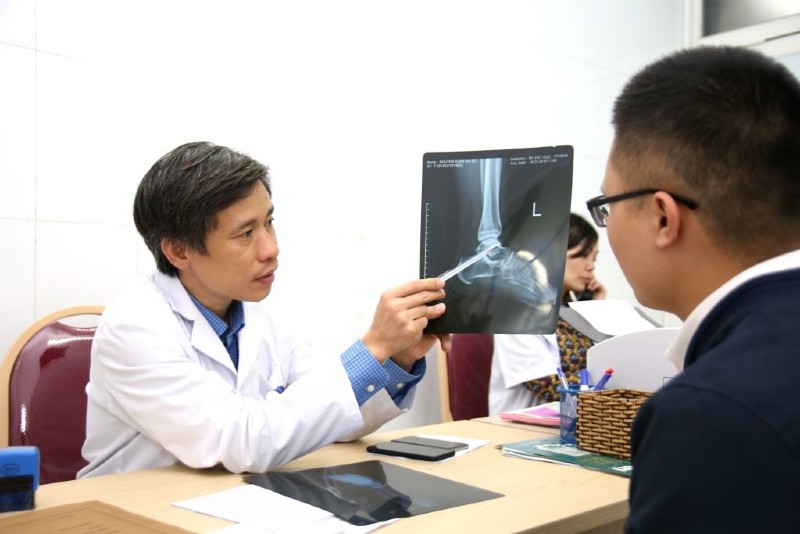
![[Photo] Solemn opening of the 1st Government Party Congress](https://vphoto.vietnam.vn/thumb/1200x675/vietnam/resource/IMAGE/2025/10/13/1760337945186_ndo_br_img-0787-jpg.webp)











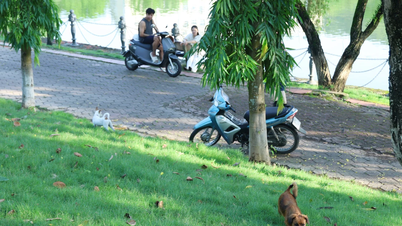

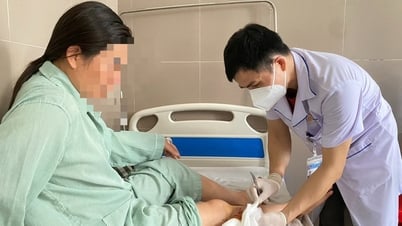
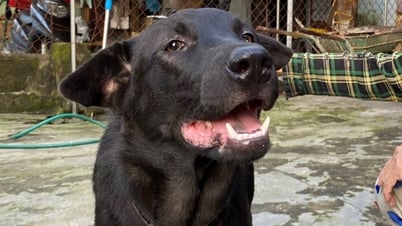




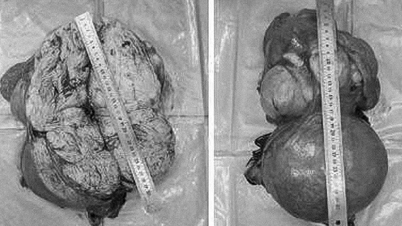


















































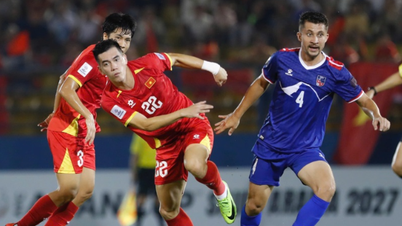













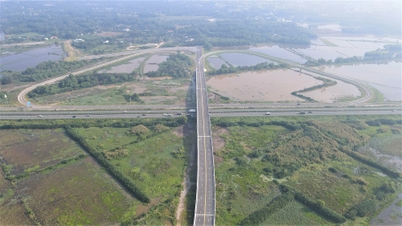
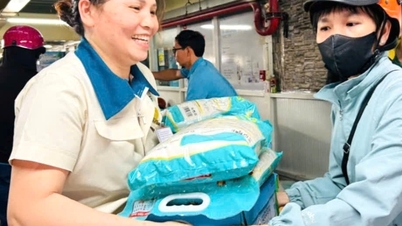








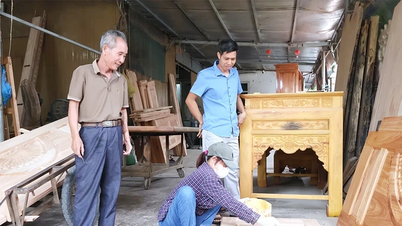









Comment (0)